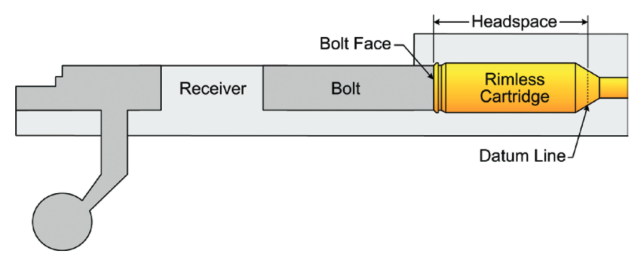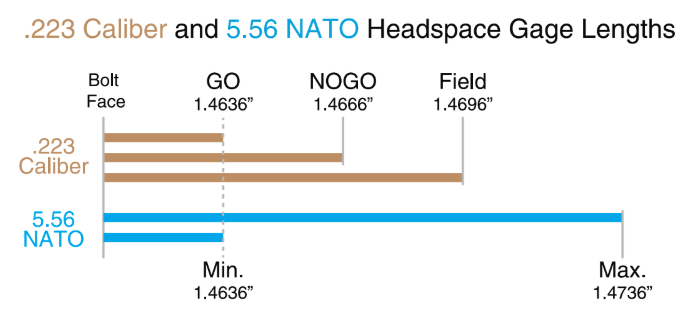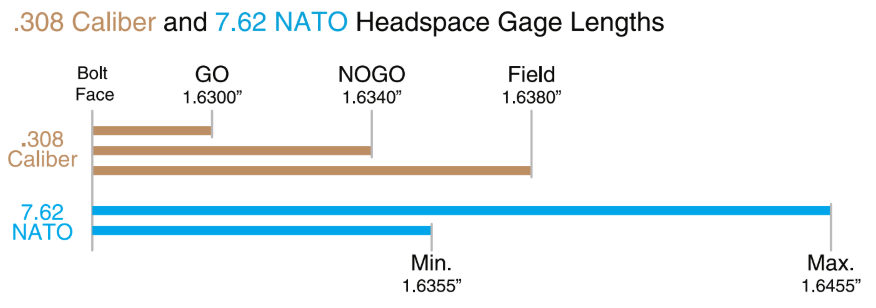If you’ve ever thought 5.56 NATO and .223 caliber—or 7.62 NATO and .308 Win caliber—were interchangeable, you’re not alone. But when it comes to headspace gages, the differences matter—a lot.
But before we dive into the differences…let’s start with the basics:
What is Headspace?
Headspace is the distance between the bolt face and a specific point on the chamber shoulder—called the datum line—where the front of the cartridge rests when the bolt is closed. This measurement is crucial for ensuring safe and accurate firearm function.

5.56 NATO vs .223 Caliber Headspace Gages
While these two rounds may look alike, the 5.56 NATO chamber allows for a slightly longer headspace than the .223 caliber. This is a critical difference when using headspace gages.

- .223 ammunition in a 5.56 NATO rifle chamber? Safe to fire, but accuracy may suffer due to the longer throat of the 5.56 chamber.
- 5.56 NATO ammo in a .223 Remington Rifle? Not recommended. The shorter throat of the .223 chamber can lead to dangerous pressure spikes potentially damaging the chamber
7.62 NATO vs .308 Win Caliber Headspace Gages
The 7.62 NATO was developed in the early 1950s as part of a U.S. Government effort to create a cartridge that offered similar power and velocity to the .30-06, but in a more compact and lighter design. Winchester later adapted it for the civilian market as the .308 Win. While nearly identical, there’s one major difference: headspace length.

The 7.62 NATO chamber has a longer headspace than the .308 Win, so it’s important to check the rifle chamber with specific 7.62 NATO headspace gages.
Why This Matters:
Incorrect headspace not only impacts accuracy—it can also lead to serious safety issues. That’s why choosing the right gage is essential whether you’re building, inspecting, or shooting.
Have questions or need the right gage for your setup? Contact us anytime or visit our site!

